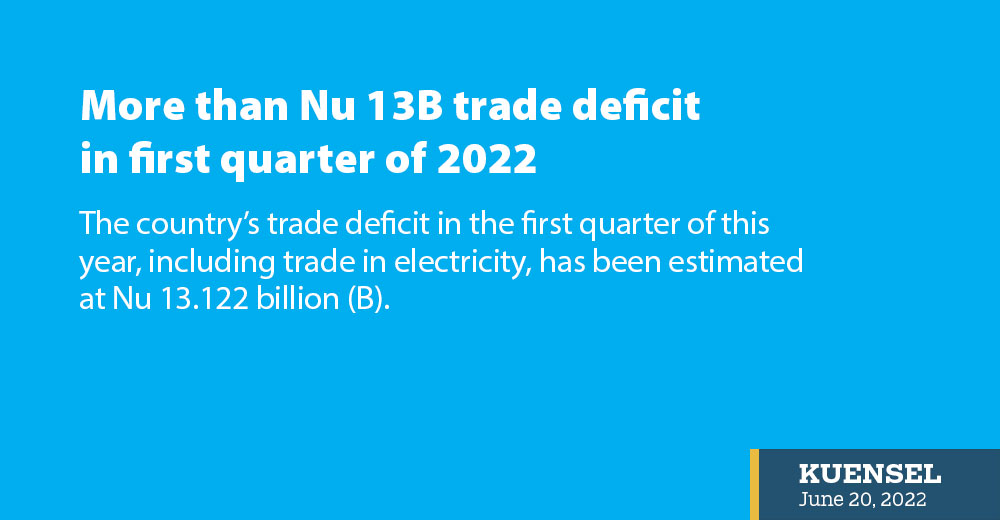MB Subba
The country’s trade deficit in the first quarter of this year, including trade in electricity, has been estimated at Nu 13.122 billion (B).
This is a significant increase from that of the same period last year, which was Nu 10B.
A trade deficit is the amount by which the value of a country’s imports exceeds the value of its exports.
During the first quarter, Bhutan imported commodities worth more than Nu 22.874B, while the value of its exports (including electricity) amounted to Nu 9.75B, according to the provisional trade statistics released by the finance ministry.
The trade deficit, excluding trade in electricity, stood at Nu 13.844 billion.
Excluding electricity, the value of the country’s exports and exports amounted to Nu 9B and Nu 22.873B respectively.
However, the trade deficit with India decreased to Nu 8.479B in the first quarter from Nu 9B in the same period last year.
The value of Bhutan’s exports to India was to Nu 7.558B, while it imported goods worth Nu 16B from the same country.
The statistics show a high dependence of the economy on electricity. The trade deficit with India without electricity amounted to more than Nu 9.2B.
Electricity generation in the first three of the year – January to March – is usually low.
The country exported electricity worth Nu 210M to India in the first quarter.
The country’s major imports include fuel, contributing to deficits with India.
The overall trade deficit is expected to increase as the imports are expected to surge with the normalisation of the Covid-19 protocols.
The budget report 2022-23 states that trade is expected to remain on an increasing trend over the medium term owing to the recovery in the demand coupled with the revival in domestic activities.
The budget report projects that the overall exports and imports increase by 25.7 percent and 30.7 percent respectively in 2022, further widening the trade deficit.
“This is mainly due to decline in energy generation and lower hydro exports and significant increase in imports,” it states.
Trade deficit is estimated to widen from 7.1 percent in fiscal year 2020-21 to 17.8 percent of GDP in fiscal year 2021-22.
However, the balance of trade is expected to improve with the commissioning of Punatsangchhu I and II, and Nikachhu hydropower projects.
Both exports and imports increased by 18.9 percent and 35.8 percent in 2021 compared to 2020.
In 2021, the overall nominal value of exports stood at Nu 58.25B, while the nominal value of imports amounted to Nu 90.323B.
In terms of trade with India, both exports and imports increased due to the revival of demand and the resumption of productive activities.


